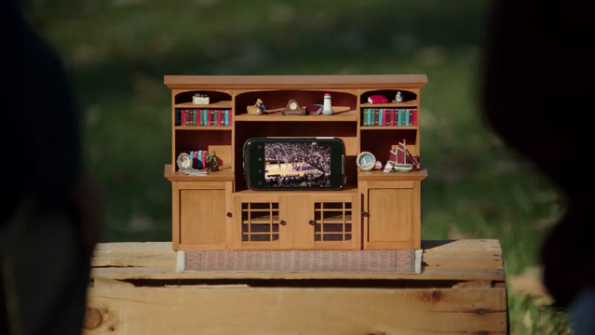Living room TV is now the "second" screen
For years we in the press have been describing anything that is viewed away from the living room television as “the second screen.” First it was the computer, then the handheld media player and later the cell phone.
Today it’s not a stretch to proclaim that the cell phone (or "smart" phone as some like to say) is the “first screen” most consumers go to, on an average of six times per day (and many of us lots more).
Indeed, a recent whitepaper from Parks Associates details how smart phones and tablets are expanding their role in video second-screen experiences, with 22% of U.S. broadband consumers checking or updating their social network on a smart phone or tablet while watching TV. Instances of mobile activities while watching TV increases significantly among Millennials, where consumers 18-34 are 70% more likely than other age groups to look up TV listings via a mobile device.
"The mobile device is the implied peripheral in the second-screen concept, but increasingly it is the first screen consumers look at during a video-viewing experience," said Brett Sappington, director, research, Parks Associates. "The growth of OTT (over-the-top) services, pay-TV initiatives such as TV Everywhere, and increases in mobile apps have all contributed to this shift. Eighteen percent of U.S. homes with a smart phone or tablet use an app from their pay-TV provider to check TV listings, program their DVR, or watch TV programming."

Some are now referring to the cell phone as “Man’s new Best Friend.” A separate survey commissioned by Citrix found that Americans admitted to spending almost every waking minute with their devices, whether checking news and social media feeds first thing each morning, eating every meal with device in hand, or watching reality TV shows in secret.
[Wakefield Research conducted the survey of more than 1,000 American smart phone and tablet owners ages 18 and older in January 2013.]
Interestingly, the Cirtix survey also found that when asked, the primary reason for using their mobile devices, 64 percent of survey respondents said “to keep myself from being bored.” The next most popular reason, “to bring friends or family together,” was cited by just 32 percent of respondents, which the survey results indicates that Americans may prefer quality time with a mobile device to hanging out with a “real” friend.
The professional video industry's #1 source for news, trends and product and tech information. Sign up below.
Recognizing this inevitable conclusion, major content creators are using the cell phone to promote TV shows, judge viewer reactions to programs (and advertisements) and to launch new shows in shortened form, and for late-breaking news events.
What this says to broadcasters is that they must re-evaluate the cell phone as the primary viewing device and react accordingly. TV station websites, while still an important part of any media delivery strategy, have now been relegated to the “Third” screen.
At this point in time mpbile video viewing is surely a case of quantity over quality, in terms of the content viewed, but there’s increasingly more and more time spent with the cell phone than the larger living room TV; and advertisers are beginning to take notice.
Or maybe, like in the Dish Network Hopper “TV Everywhere” box commercials, consumers will get so hooked on their cell phones that they'll install them inside a miniature media console and watch TV from the privacy of… well privacy is perhaps the last remaining bastion of the living room TV.
